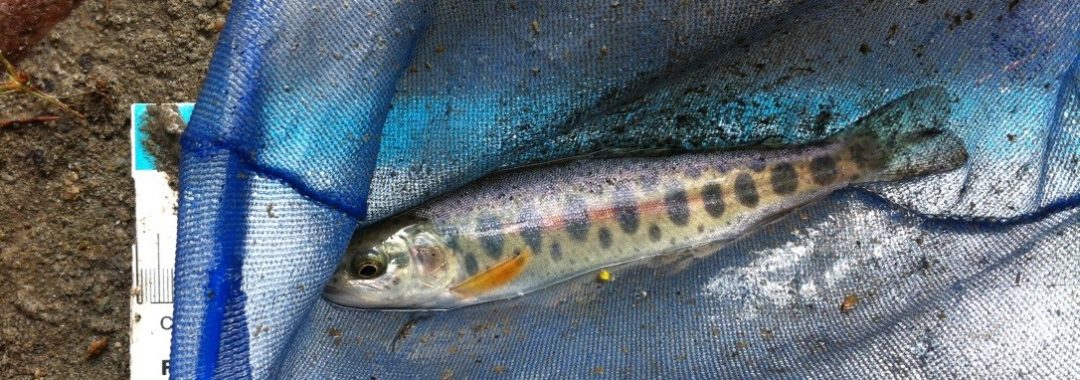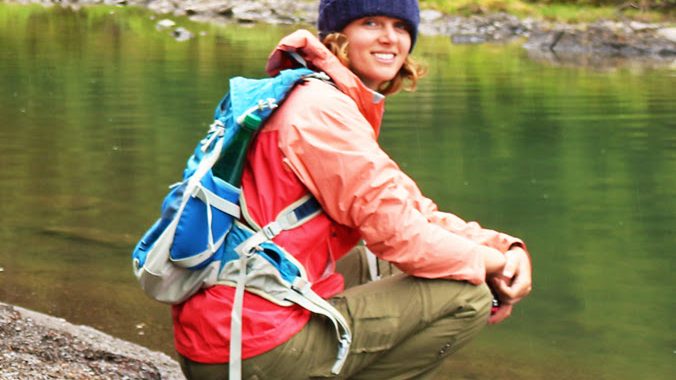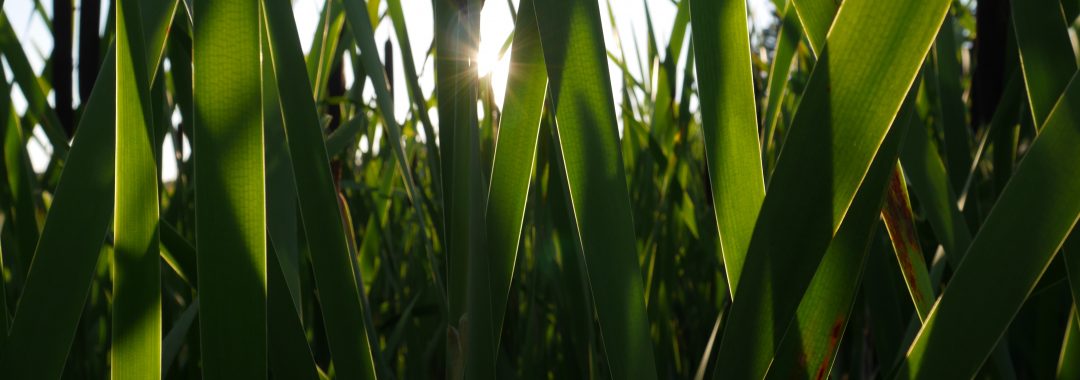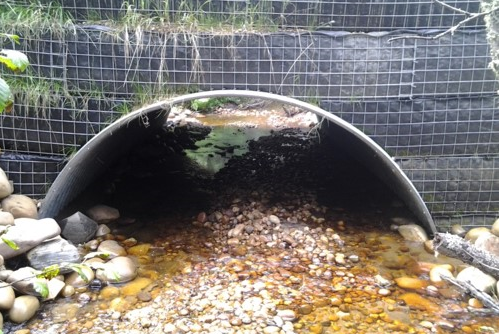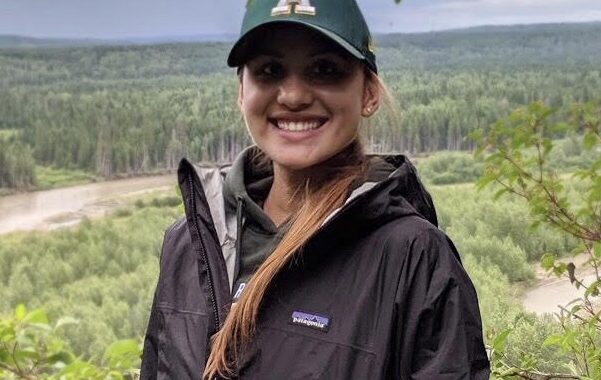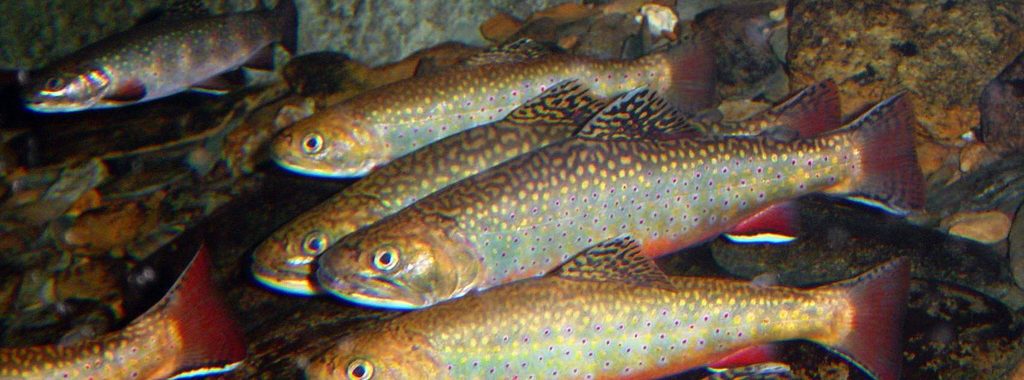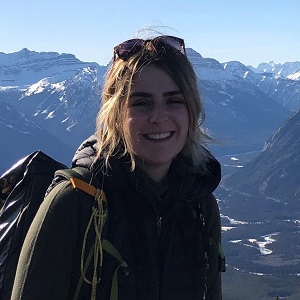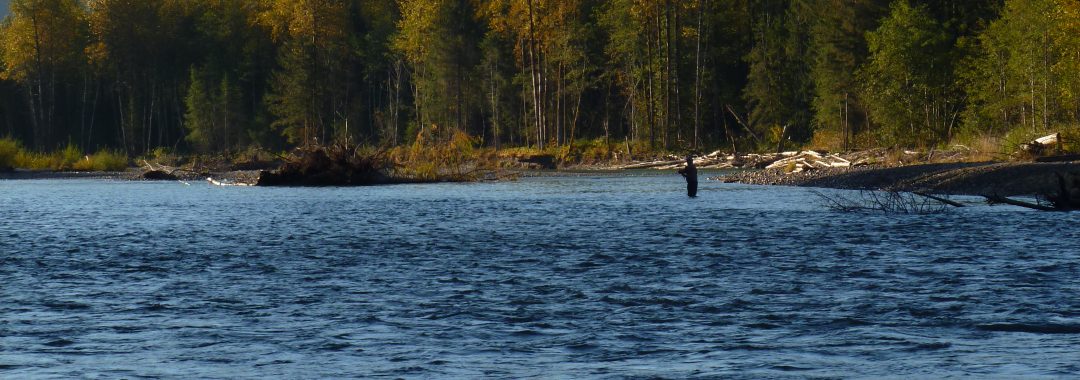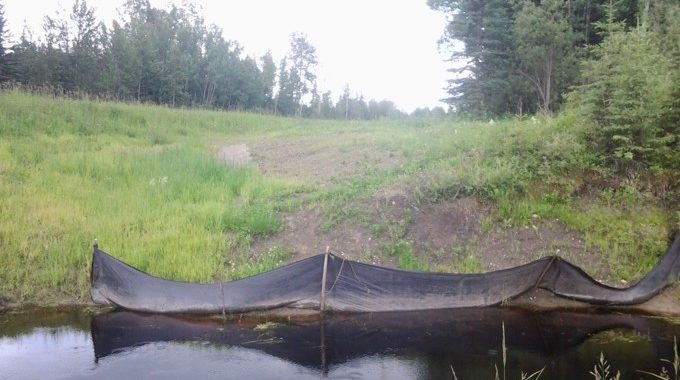Citation: Medinski, N.A., Maitland, B.M., Jardine, T.D., Drake, D.A.R. and M.S. Poesch (2022) A catastrophic coal mine spill in the Athabasca River watershed induces isotopic niche shifts in stream biota including an endangered rainbow trout ecotype. Canadian Journal for Fisheries and Aquatic Sciences.
Category Archives: Mark Poesch
My research focuses on issues related to aquatic biodiversity, including: conservation of freshwater fishes (e.g. species at risk, invasive species), sustainable resource development and developing robust restoration and reclamation activities. My goals are to: build effective collaborations across Alberta and North America; to train the next generation of research leaders; to provide an atmosphere of respect and learning; to engage the public and stakeholders; and, to develop leading edge novel research to solve applied problems.
Congratulations to Karling Roberts and Taylor Lund for their paper which was “Highly Commended” for the FSBI Huntingford Medal!
Congratulations to Karling Roberts and Taylor Lund, whose paper (citation below) was listed as one of two papers Highly Commended for FSBI Huntingford Medal!
- Roberts, K.N., Lund, T., Hayden, B. and S. Poesch (2022) Season and species influence stable isotope ratios between lethally and non-lethally sampled tissues in freshwater fish. Journal of Fish Biology 100(1): 229-241. (link)
Congratulations to Chloe Christenson and Jacqueline Pallard for winning Women in STEM Research awards!
Congratulations to Jacqueline Pallard and Chloe Christenson for winning Women in STEM Research Awards!
Dutra, M.C.F., Pereyra, P.E.R., Hallwass, G., Poesch, M.S. and R.A.M. Silvano. (2023). Fishers’ knowledge on trophic ecology and of the tropical ‘super fish’ Plagioscion squamosissimus in two Brazilian Amazonian rivers. Neotropical Ichthyology 21(1): e220041.
Abstract:
Fishers’ local ecological knowledge (LEK) can provide new data on fish trophic ecology. The pescada (Plagioscion squamosissimus) is among the most caught fishes in small-scale fisheries in the Brazilian Amazon. Our main goal was to evaluate the abundance, size, relevance to small-scale fisheries and trophic ecology (diet and feeding interactions) of P. squamosissimus in the Tapajós and Tocantins rivers, in the Brazilian Amazon, utilizing data from fishers’ LEK and fish sampling. We hypothesized a higher abundance, size and more prey and predators cited by fishers of P. squamosissimus in the more pristine Tapajós River. We interviewed 61 and 33 fishers and sampled fish in nine and five sites in the Tapajós and Tocantins Rivers, respectively, in 2018. The comparison between fishers’ citations and fish sampled indicated a higher relevance of P. squamosissimus to fishers in the Tapajós River, where this fish had an average larger size and where the interviewed fishers mentioned more food items of P. squamosissimus. These results show that P. squamosissimus is a generalist fish, that is resilient to fishing and environmental pressures, as well as being important to fisheries and food security, and that LEK can provide useful insights to fisheries managers. Keywords: Offsetting; Conservation policy; Biodiversity market; Preservation.
Citation: Dutra, M.C.F., Pereyra, P.E.R., Hallwass, G., Poesch, M.S. and R.A.M. Silvano. (2023). Fishers’ knowledge on trophic ecology and of the tropical ‘super fish’ Plagioscion squamosissimus in two Brazilian Amazonian rivers. Neotropical Ichthyology 21(1):e220041.
Also Read:
*Lab members: Mark Poesch. Check out opportunities in the lab!
New article on habitat banking by Sebastian Theis available now!
Citation: Theis S., and M.S. Poesch (2022) Current capacity, bottlenecks, and future projections for offsetting habitat loss using mitigation and conservation banking in the United States assessed through the Regulatory In lieu fee and Bank Information Tracking System. Journal for Nature Conservation 67: 126159.
New research on mercury, selenium and arsenic concentrations in Canadian freshwater fish now Online!
Check out new research on human consumption risks of fish from mercury, selenium and arsenic.
Ponton D.E., Ruelas-Inzunza J., Lavoie R., Lescord G.L., Johnston T.A., Graydon J.A., Reichert, M., Donadt C.*, Poesch M.S., Gunn, J.A., and M. Amyot. (2022) Mercury, selenium and arsenic concentrations in Canadian freshwater fish and a perspective on human consumption intake and risk. Journal of Hazardous Materials Advances 6: 100060.
Abstract:
Mercury (Hg) and arsenic (As) contamination of fish may limit its human consumption whereas selenium (Se) can potentially protect fish and consumers from their adverse effects. We related the concentrations of these elements in Canadian freshwater fish to anthropogenic activities and ecozones and compared these concentrations to risk assessment thresholds. Mercury concentrations exceeded the retail fish Canadian threshold (0.5 ppm) in 31% of all Walleye; this proportion rose to 64% in reservoirs. Reservoirs and lakes impacted by logging and urbanization presented higher fish [Hg] than other impacted systems. In mining areas, fish [Hg] were low and negatively correlated with [Se]. Se and As concentrations exceeded Canadian guidelines in 5 and 0.2% of all fish, respectively. A previously unreported negative relationship between mean [As] and [Hg] suggested an inverse consumption risk for these two elements. The ratio Se/Hg was lower than 1 for 14% of all fish and was negatively correlated with fish length. No major differences were seen among fish lengths that reached the Hg guideline and the Se/Hg threshold of 1. Using the benefit-risk value (BRV) threshold that considers Se intake, there were no limit to fish consumption. More studies are needed to assess the role of Se against Hg toxicity and adjust fish consumption guidelines accordingly.
Citation: Ponton D.E., Ruelas-Inzunza J., Lavoie R., Lescord G.L., Johnston T.A., Graydon J.A., Reichert, M., Donadt C., Poesch M.S., Gunn, J.A., and M. Amyot. (2022) Mercury, selenium and arsenic concentrations in Canadian freshwater fish and a perspective on human consumption intake and risk. Journal of Hazardous Materials Advances 6: 100060.
Also Read:
*Lab members: Caitylyn Donadt and Mark Poesch. Check out opportunities in the lab!
Theis S.*, and M.S. Poesch (2022) Current capacity, bottlenecks, and future projections for offsetting habitat loss using mitigation and conservation banking in the United States. Journal for Nature Conservation 67:126159.
Abstract:
Habitat banking in its many iterations is an established and popular mechanism to deliver environmental offsets. The United States can look back at over 30 years of banking experience with the underlying framework and policies being consistently updated and improved. Given the increased demand in habitat banking, we provide insights into how bank area capacity is distributed across the United States for four different bank targets (wetlands, streams, multiple ecosystems, species) based on information extracted from the Regulatory In-lieu Fee and Bank Information Tracking System, as well as, estimating future capacities and area reserves through a predictive modeling approach based on data from the past 26 years. Future predictions indicate a decrease in available reserves for banks targeting wetlands or multiple ecosystems, with potential bottlenecks relating to large reserves being limited to the southeast and release schedules not catching up to the current and anticipated demand. Banks targeting species or streams are predicted to meet future demand, with species banks (conservation banks) following a different legislative and operational approach based on the listing of endangered species and pro-active approaches with anticipated future demand. Most current reserves for all four bank types are restricted to very few service areas with around one-third of all bank areas still awaiting release, limiting their availability on a broader scale. Strategic planning networks are necessary to meet future demand on a national scale and to identify areas suitable for banking or likely to experience future environmental or developmental stress.
Citation: Theis S., and M.S. Poesch (2022) Current capacity, bottlenecks, and future projections for offsetting habitat loss using mitigation and conservation banking in the United States assessed through the Regulatory In lieu fee and Bank Information Tracking System. Journal for Nature Conservation 67: 126159.
Also Read:
*Lab members: Sebastian Theis and Mark Poesch. Check out opportunities in the lab!

